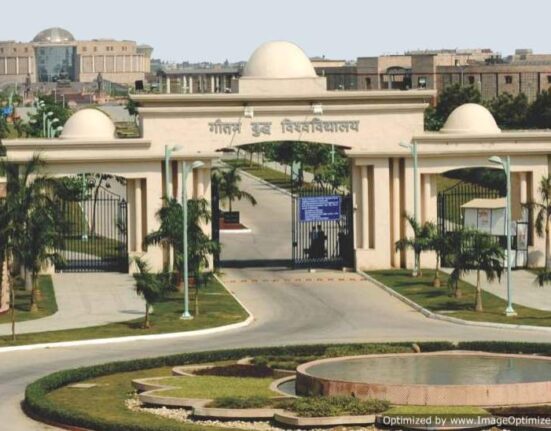This article, “The Ayodhya Dilemma: A Journey Towards Peace” is written by Urvashi Lanjhewar a 4th year Law student at Sage University, Indore
Introduction:
Ram Mandir in Ayodhya stands as a symbol of faith, culture, and history deeply ingrained in the fabric of India. The journey towards the construction of this grand temple has been very long and arduous, marked by centuries of religious significance, political strife, legal battles, and finally, a monumental effort to bring the dream of millions to fruition. In exploring the narrative surrounding the Ayodhya Ram Mandir, we delve into the rich tapestry of Indian history, religion, politics, and society.
Origins and Significance:
The city of Ayodhya, located in the northern Indian state of Uttar Pradesh, holds immense religious significance in Hinduism as the birthplace of Lord Ram, one of the most revered deities in the Hindu pantheon. According to Hindu mythology, Ayodhya was the capital of the ancient Kosala Kingdom and the birthplace of Lord Ram, the seventh avatar of the god Vishnu.
The epic poem, the Ramayana, attributed to the sage Valmiki, narrates the life and adventures of Lord Ram, including his birth in Ayodhya, his exile to the forest, the abduction of his wife Sita by the demon king Ravana, and his eventual triumph over evil with the help of his loyal devotee Hanuman and his army of monkeys.
For centuries, Ayodhya has been a site of pilgrimage and devotion for millions of Hindus, who consider it a sacred place imbued with the presence of Lord Ram. The Ram Janmabhoomi, or the birthplace of Ram, has been revered as a holy site where devotees pay homage to their beloved deity and seek blessings for prosperity, happiness, and spiritual fulfilment.
Historical Context:
The history of Ayodhya and the Ram Janmabhoomi is intertwined with a complex tapestry of religious, cultural, and political developments spanning over several centuries. The first recorded instance of conflict over the site dates back to the 16th century during the Mughal era when Babur, the first Mughal emperor of India, constructed a mosque known as the Babri Masjid at the site traditionally believed to be the birthplace of Lord Ram.
The Babri Masjid, named after Babur, became a symbol of Muslim rule in India and a centre of worship for the Muslim community. However, over time, disputes arose regarding the ownership and legitimacy of the site, with Hindu groups claiming that the mosque was built after demolishing a pre-existing Hindu temple marking the birthplace of Lord Ram.
Legal Disputes and Political Controversies:
The dispute over the Ram Janmabhoomi-Babri Masjid site escalated in the 20th century, leading to legal battles, communal tensions, and political controversies that profoundly impacted Indian society and politics. In 1949, idols of Ram were surreptitiously placed inside the Babri Masjid, leading to the site’s closure by the authorities and sparking communal tensions between Hindus and Muslims.
Subsequently, various court cases were filed seeking ownership and control over the disputed site, with the legal battle intensifying in the 1980s when the Vishva Hindu Parishad (VHP), a Hindu nationalist organization, launched a mass movement to reclaim the site and build a grand temple dedicated to Lord Ram.
The political landscape of India was profoundly influenced by the Ram Janmabhoomi movement, with the Bharatiya Janata Party (BJP), a Hindu nationalist party, championing the cause and mobilizing public sentiment in favor of constructing a Ram Mandir at the disputed site. The movement galvanized millions of Hindus across India, leading to widespread protests, rallies, and acts of civil disobedience.
Demolition of the Babri Masjid:
The Babri Masjid demolition on December 6, 1992, marked a watershed moment in Indian history, triggering widespread communal violence and sectarian strife that claimed thousands of lives and deeply polarized Indian society along religious lines. The demolition of the mosque by Hindu nationalist activists fueled anger and resentment among the Muslim community and drew condemnation from across the world.
The event had far-reaching consequences, leading to the imposition of martial law in parts of India, the dismissal of state governments, and a wave of reprisal attacks against minority communities. The Babri Masjid demolition exposed the fault lines of communalism and religious intolerance in Indian society and cast a long shadow over the country’s secular fabric.
Legal Proceedings and Judicial Verdicts:
In the aftermath of the Babri Masjid demolition, the legal battle over the ownership of the disputed site continued unabated, with multiple parties staking claim to the land and seeking redressal through the Indian judicial system. The case underwent several twists and turns, with the courts grappling with complex legal, historical, and constitutional issues.
In 2010, the Allahabad High Court delivered a landmark judgment in the Ayodhya title suit, dividing the disputed land into three equal parts among the Sunni Waqf Board, the Nirmohi Akhara, and the Ram Janmabhoomi Nyas. However, all parties involved in the case appealed against the verdict, leading to a protracted legal battle that ultimately culminated in a historic judgment by the Supreme Court of India.
In November 2019, the Supreme Court delivered its verdict in the Ayodhya land dispute case, granting the entire disputed site to the Hindu parties and paving the way for the construction of a Ram Mandir. The court also directed the government to allocate five acres of alternate land to the Sunni Waqf Board for the construction of a mosque, in a bid to foster communal harmony and reconciliation.
Construction of the Ram Mandir:
Following the Supreme Court’s verdict, the construction of the Ram Mandir in Ayodhya commenced with great fervour and enthusiasm, symbolizing the culmination of a centuries-old dream cherished by millions of Hindus. The groundbreaking ceremony for the temple took place on August 5, 2020, coinciding with the auspicious occasion of Ram Janmabhoomi Pujan, and was attended by Prime Minister Narendra Modi and other dignitaries.
The construction of the Ram Mandir is being undertaken by the Shri Ram Janmabhoomi Teerth Kshetra, a trust established by the government of India to oversee the development and management of the temple complex. The temple is envisioned as a grand architectural marvel, incorporating elements of traditional Hindu temple architecture and modern construction techniques.
The Ram Mandir complex is designed to encompass not only the main temple dedicated to Lord Ram but also various auxiliary structures, including meditation halls, exhibition galleries, prayer halls, and facilities for pilgrims and visitors. The temple is expected to emerge as a major pilgrimage destination and cultural landmark, attracting devotees and tourists from across the globe.
Socio-Political Implications:
The construction of the Ram Mandir in Ayodhya holds profound socio-political implications for India, shaping the discourse on religion, nationalism, and identity in the country. While the temple project has been hailed as a triumph of Hindu unity and faith, it has also raised concerns about the marginalization of religious minorities and the erosion of India’s secular ethos.
The Ram Mandir controversy has underscored the complexities of religious pluralism and cultural diversity in India, highlighting the need for dialogue, reconciliation, and mutual respect among different religious communities. The challenge lies in fostering an inclusive vision of India that respects the rights and dignity of all its citizens, regardless of their religious beliefs or cultural affiliations.
Conclusion:
The journey towards the construction of the Ram Mandir in Ayodhya is a testament to the enduring power of faith, the resilience of the human spirit, and the complexities of India’s socio-political landscape. It is a saga marked by triumph and tragedy, hope and despair, unity and division, reflecting the myriad contradictions and aspirations of a nation striving to reconcile its past with its future.
As the Ram Mandir takes shape on the sacred soil of Ayodhya, it serves as a reminder of the enduring legacy of Lord Ram and the timeless ideals of righteousness, justice, and compassion that he embodies. It is a symbol of unity in diversity, of harmony amidst discord, and of the eternal quest for truth and enlightenment that transcends the boundaries of religion, caste, and creed.
In the grandeur of the Ram Mandir, we find not only a temple of stone and mortar but also a sanctuary of the soul, a beacon of hope, and a testament to the indomitable spirit of India and its people. May the Ram Mandir stand as a symbol of peace, prosperity, and goodwill for generations to come, inspiring humanity to strive for the highest ideals of truth, love, and righteousness.
Reference
https://www.jstor.org/stable/3520344
https://indianhistorycollective.com/ayodhya-1855







Leave feedback about this